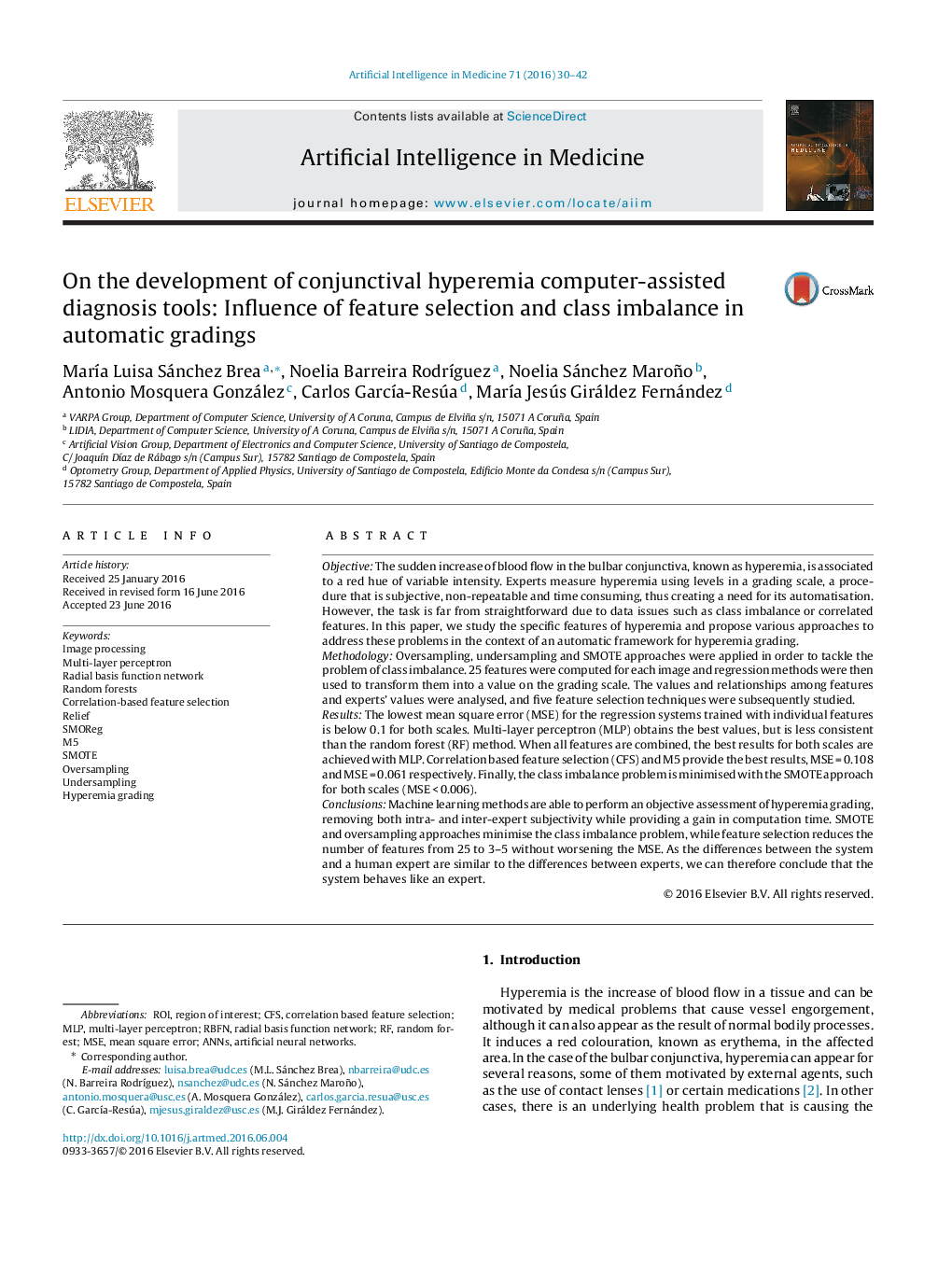| کد مقاله | کد نشریه | سال انتشار | مقاله انگلیسی | نسخه تمام متن |
|---|---|---|---|---|
| 377548 | 658790 | 2016 | 13 صفحه PDF | دانلود رایگان |
ObjectiveThe sudden increase of blood flow in the bulbar conjunctiva, known as hyperemia, is associated to a red hue of variable intensity. Experts measure hyperemia using levels in a grading scale, a procedure that is subjective, non-repeatable and time consuming, thus creating a need for its automatisation. However, the task is far from straightforward due to data issues such as class imbalance or correlated features. In this paper, we study the specific features of hyperemia and propose various approaches to address these problems in the context of an automatic framework for hyperemia grading.MethodologyOversampling, undersampling and SMOTE approaches were applied in order to tackle the problem of class imbalance. 25 features were computed for each image and regression methods were then used to transform them into a value on the grading scale. The values and relationships among features and experts’ values were analysed, and five feature selection techniques were subsequently studied.ResultsThe lowest mean square error (MSE) for the regression systems trained with individual features is below 0.1 for both scales. Multi-layer perceptron (MLP) obtains the best values, but is less consistent than the random forest (RF) method. When all features are combined, the best results for both scales are achieved with MLP. Correlation based feature selection (CFS) and M5 provide the best results, MSE = 0.108 and MSE = 0.061 respectively. Finally, the class imbalance problem is minimised with the SMOTE approach for both scales (MSE < 0.006).ConclusionsMachine learning methods are able to perform an objective assessment of hyperemia grading, removing both intra- and inter-expert subjectivity while providing a gain in computation time. SMOTE and oversampling approaches minimise the class imbalance problem, while feature selection reduces the number of features from 25 to 3–5 without worsening the MSE. As the differences between the system and a human expert are similar to the differences between experts, we can therefore conclude that the system behaves like an expert.
Journal: Artificial Intelligence in Medicine - Volume 71, July 2016, Pages 30–42
